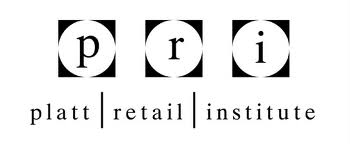GROWTH IN UNIVERSITY ADOPTION OF DIGITAL SIGNAGE DEMANDS ROI ANALYSIS

Universities are rapidly adopting digital signage networks as an important communication tool. As Platt Retail Institute’s (PRI) Research Report entitled “Communication Effectiveness in Higher Education” illustrates, digital communication networks (DCNs) are a viable alternative to various older forms of on-campus communication. Yet little research has been conducted that quantifies the value derived by a school from this investment.
In light of the need by universities to justify these expenditures, PRI has developed a research methodology to quantify the value derived from a university’s investment in a DCN. From the results of our test, universities will have greater insight into knowing who is, in fact, looking at their DCN messages, and the impact achieved. PRI has secured the participation of twenty major U.S. institutions in this research. Field testing will begin in the summer of 2012, with an anticipated release of the Working Paper’s findings by year-end.
Specific benefits for a school from this research will include:
• Quantify the value derived from an investment in a DCN generally, and from specific applications.
• Enhance targeting of messages.
• Gauge message impact effectiveness.
• Illustrate various uses of, and the benefits to be derived from, a DCN.
• Evaluate various content strategies.
In this article, we briefly summarize our research methodology. It is important to note that PRI is able to undertake this study due to the support of its sponsors, including: Digital Signage Expo, Four Winds Interactive, Intel and NEC Display Solutions.
Universities have developed many uses for digital signage networks. For this reason, it is important to address as many of these value drivers as possible. The following is the list of applications that we will be studying. A metric or other quantification system will then be utilized to measure the value derived from each application at various test sites.
These include:
A. Learning Tool.
B. Emergency Notification.
C. Event Attendance.
D. Way Finding.
E. Branding.
F. Promotional Impact.
G. Third-Party Advertising.
H. Enrollment and Retention.
In addition to testing each of the eight functions, digital cameras will be installed to collect anonymous viewer analytics. This data will be used to determine: screen and content awareness; the number of viewers; the length of time viewers look at a screen; and viewer demographics.
A daily selection of the top stories for AV integrators, resellers and consultants. Sign up below.
The Eight Value Drivers of a DCN on Campus to be Tested
Learning Tool
For purposes of this study, simulation environments will be tested. Simulation environments include the use of digital screens to imitate a stock trading room or a hospital operating room.
Emergency Notification
A DCN possesses many attributes that can enhance a school’s emergency notification system and contribute to the overall safety of a university campus, which will be evaluated and quantified.
Event Attendance
Campus life involves student gatherings and events of all types. Event attendance, for purposes of our test, refers to the ability of a DCN to impact student awareness of an event, as well as to influence their behavior to attend such an event.
Way finding
The purpose of this test will be to determine the value of a digital signage way finding system when considering its utility in helping users find their destinations.
Branding
Here, PRI will compare how digital and static signage influences the perception of a university, and awareness of the university’s brand by students, faculty, staff, and visitors.
Promotional Impact
To test whether digital signage has the potential to positively affect sales on-campus, various targeted products will be promoted using digital signs.
Third-Party Advertising
One way to help to pay for the installation and maintenance of a DCN is through third-party advertising. While few universities are currently accepting third-party ads, there is the potential to acquire additional revenue by selling ad space, which will be considered.
Enrollment and Retention
Student tuition and fees constitute the main source of funding for universities. To measure DCN impact, PRI will analyze enrollment and retention records before and after the installation of a university’s DCN.
Universities may be the most complex users of digital signage, as they simultaneously deploy their networks to meet a number of diverse communication goals. Despite their generally positive view of digital signage, universities also know that a DCN can be expensive. PRI’s research is designed to help universities understand the value of their network and to help them improve upon their utility.
The AVNetwork staff are storytellers focused on the professional audiovisual and technology industry. Their mission is to keep readers up-to-date on the latest AV/IT industry and product news, emerging trends, and inspiring installations.
